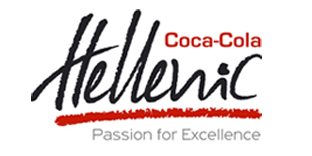Green Manufacturer 2015 Coca-Cola Hellenic Ireland
 Coca-Cola Hellenic Ireland was recently recognized for its work in the sustainability area when it took home the Green Manufacturer Award at the 2015 Green Awards recently held in the Burlington Hotel in Dublin. The award was collected by Environment Manager Louise Wilson on behalf of the business. Its environmental efforts are focused on areas where it can have the greatest impact and can therefore make the most significant contribution. These include water stewardship, energy and climate protection and packaging and recycling.
Coca-Cola Hellenic Ireland was recently recognized for its work in the sustainability area when it took home the Green Manufacturer Award at the 2015 Green Awards recently held in the Burlington Hotel in Dublin. The award was collected by Environment Manager Louise Wilson on behalf of the business. Its environmental efforts are focused on areas where it can have the greatest impact and can therefore make the most significant contribution. These include water stewardship, energy and climate protection and packaging and recycling.
Cocal-Cola Hellenic sets performance targets and report its progress every year and its bottling plants are regularly audited against the environmental standards of The Coca-Cola Company.
The entire team embraces these targets and takes great pride in the recognition achieved to date at a group level from the 2014 Dow Jones Sustainability Indices (DJSI), which named Coca-Cola Hellenic as an industry leader among beverage companies. In addition, the FTSE4Good, the London Stock Exchange’s index of companies that meet environmental and social criteria, has listed Coca-Cola HBC since the launch of the ranking in 2001.
This commitment to sustainability has translated into concrete achievements – large and small – for the local business. Here is just a sample:
- Between 2008 and 2013, Coca-Cola Hellenic reduced the waste it generates by a colossal 70%.
- Aluminium cans and glas bottles are now made from 50% recycled material. Cardboard used in layer pads and trays is made using recycled cardboard.
- A range of light-weighting initiatives have also been adopted to save resources. The iconic 200ml glass bottle is now 20% lighter than the original design. The can body is as thin as a human hair, 5% lighter than previous designs. PET bottles, both 2L and 500ml have been reduced in weight and the closure used on PET bottles has also been reduced in weight (from 2 piece to one piece).
- CCH constantly seek to minimize its water use within the production plant. It ensures that 100% of its waste water is treated. The quality of treated waste water leaving site is measured by COD levels and the COD load is now so low that it can support aquatic life.
- Through its on-site Combined Heat and Power Plant, CCH has reduced carbon emissions by 65%.
- It has invested hugely in energy efficient lighting across the site and use lighting sensors.
- A full line shut down procedure operates at weekends to conserve energy.
- Between 2008 and 2013, the business saw a 45% reduction in Energy Use Ratio. A tough target ahead in 2020 is to reach 0.30 mj/lbp for its Energy Use Ratio.
Continuous improvement is at the heart of the CCH sustainability strategy and a tight-knit team collaborating to identify opportunities for ongoing improvement.
Tags: cocacolahbc


